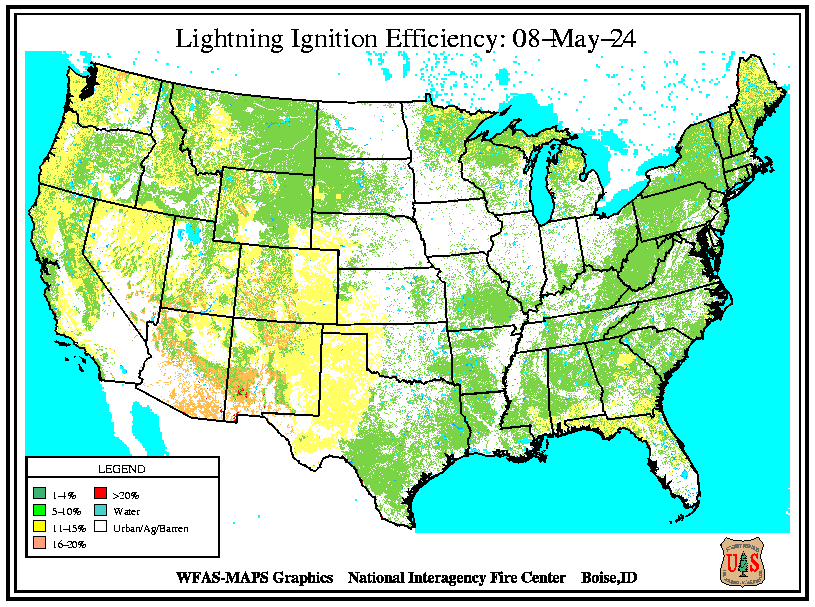|
Fire Potential / Fire Danger Maps |
Current Conditions |
Forecast |
Image Archive |
Data Archive |
|---|---|---|---|---|
|
Lightning Ignition Efficiency |
|
|
|
Lightning fires are started by strikes to ground that have a component called a continuing current. All positive discharges have a continuing current, and about 20% of negative discharges have one. (Fuquay 1982). Ignition depends on the duration of the current and the kind of fuel the lightning hits. Ignition in fuels with long and medium length needle cast, such as Ponderosa pine and Lodgepole pine, depend on the fuel moisture. Ignitions in short- needled species, such as Douglas fir depend far more on the depth of the duff layer than on the moisture. Spread of the fire after ignition usually depends on fuel moisture in all cases.
 The ignition efficiency on a 1 km pixel is given on a per discharge basis. That is, if the efficiency is high, then about 9 discharges will result in one ignition; if the efficiency is extreme, about 5 or fewer discharges will result in an ignition. The ratio of positive and negative discharges is built into the calculation. (Latham and Schlieter 1989) document the algorithm.
The ignition efficiency on a 1 km pixel is given on a per discharge basis. That is, if the efficiency is high, then about 9 discharges will result in one ignition; if the efficiency is extreme, about 5 or fewer discharges will result in an ignition. The ratio of positive and negative discharges is built into the calculation. (Latham and Schlieter 1989) document the algorithm.
The fuel type and depth are conversions of the 1 km resolution current cover type (Hardy and others 1999) for this specific calculation. The moisture input is the 100-hr dead fuel moisture.
August 2002 - The lightning ignition efficiency algorithm has been corrected due to discovery of an error. The resulting maps reflect higher lightning efficiency than previously.
